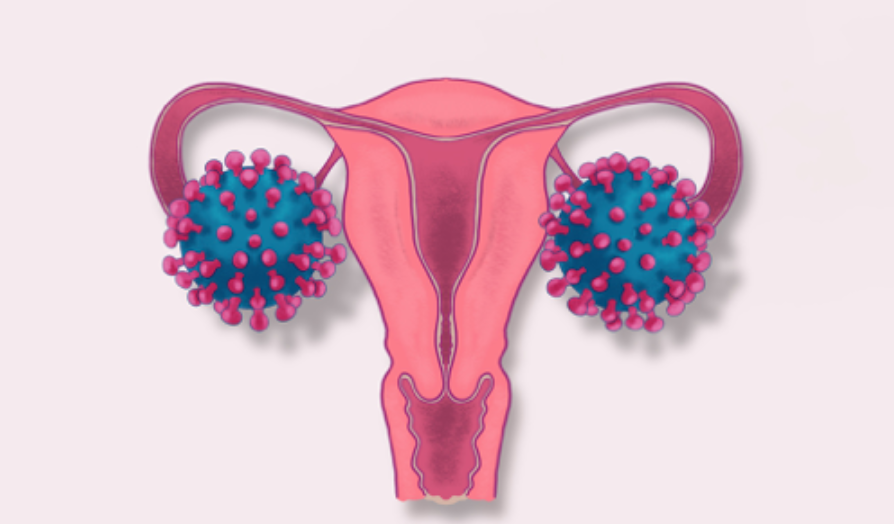By Aodong Mei
Edited by Courtney Schneider
Graphic by Sarah Lu
The COVID-19 pandemic came as no surprise to many virologists, scientists, and researchers.[1] Due to increasing globalization, scientists predicted well before COVID’s emergence that new germs and viruses could develop and spread quickly across the globe, inciting widespread panic.[2] These experts point to superbugs produced by the application of novel drugs and the polluted environment to support their predictions of a global virus.[3] To date, most countries have gradually adapted to a coexistence with the COVID-19 virus. In the three years since the virus emerged, these countries have implemented transmission prevention policies, some of them ineffective, and have accumulated valuable experiences along the way. Analyzing and learning from such policies will better equip governments when dealing with future viral outbreaks. This article evaluates two different approaches to nationwide COVID-19 management, reflects on the addition of vaccinations, and provides brief recommendations for continued efforts.
China’s Lockdowns
For three years, China has maintained its “Dynamic Zero-COVID” and “lockdown” policies, which were recently lifted due to economic and political pressure.[4] Together, these require Chinese cities that identified an outbreak of COVID-19 to lock down its citizens to stay at home. On one hand, this policy is effective in the control of the pandemic. For example, the practice of “Dynamic Zero-COVID policy” in the Shanghai and Xi’an outbreaks showed positive results.[5] The implementation of these control measures contributed to an increase in recovery rates and a decrease in the peak number of infections.[5] For a country like China with a large population and a high level of aging, such a policy calms concerned, vulnerable people while also preserving their lives and health. On another hand, such policies also have several negative outcomes.
China’s Zero-COVID policy resulted in widespread fear of COVID-19. Exaggerated media reports frightened people who were never at-risk. People who were infected with the virus experienced stigma or discrimination. Following the COVID-19 outbreak in Shanghai, a large number of people were fired by employers because they were infected by the virus, and they had great difficulty finding new jobs.[6] Such rigid and harsh policies also make daily life difficult for those living in identified outbreak areas. Some individuals in these areas are blocked from receiving necessary medical care: In just three days, two pregnant women in Xi’an were refused care by hospitals due to the lack of PCR testing results and lost their babies.[7] Similarly, a 39-year-old man with reported chest tightness was refused by the emergency department because his COVID-19 test results were older than 48 hours. He later died.[7]
The pandemic placed a large number of medical workers under immense physical and psychological stress.[8] Atop their daily tasks of providing health care to patients, they also had to complete a large amount of PCR testing work, putting themselves at risk of exposure each day. Thus, in addition to hard work and long hours, these medical workers worried whether they and their families would be infected with COVID-19 and bear the judgments of patients. Such concerns among members of the public resulted in a variety of psychological issues.[9] In this case, such an aggressive and harsh lockdown policy may not be a perfect solution, as its negative effects outweigh its benefits.
The United Kingdom and Herd Immunity
In the United Kingdom, the government opted to implement a “herd immunity” strategy before the vaccines were developed. Herd immunity occurs when a sufficiently large percentage of a population develops immunity by infection, which can stop the continuing spread of the virus in the population.[10] However, this policy led to many serious problems in the implementation process. Policies targeting herd immunity can cause both a short-term surge in the number of infections and a rapid rise in serious illnesses and deaths, bringing stress upon the health care system.[11] As such, the process of achieving herd immunity without vaccination results in many families suffering physically and emotionally. Ultimately, the herd immunization strategy was terminated three days after it was enacted in the United Kingdom and the government instead proposed policies to limit the spread of the virus.[12] Using herd immunity to combat the pandemic did not sufficiently reduce its impact.
Vaccines
When the vaccine became available, efforts to address the pandemic changed. Many countries encouraged citizens to receive vaccines. The worldwide vaccination rate has now reached 71.2 percent.[13] However, low vaccination rates in many developing countries–compared with the almost fully vaccinated developed countries–allow the virus to evolve and mutate as it passes from person to person. The continuous emergence of variants makes the vaccine less effective. According to the latest research, COVID-19, an RNA virus, is vastly different from DNA virus like smallpox, which was completely eradicated in 1980.[14] Scientists find it more difficult to eliminate RNA viruses, because RNA viruses mutate much faster than DNA viruses.[3] Moreover, vaccines, such as those currently available for COVID-19, are made based on the fixed genes or proteins of the virus. As a result, as long as RNA viruses still exist in the population and are able to mutate, it is nearly impossible to find a method for long-term prevention.[3] Shared practices can help fight the virus, such as sending experienced medical teams to help each other or establishing an international organization that provides free vaccines.[15]
Moving Forward
The COVID-19 pandemic continues with the emergence of other viruses, such as monkeypox, influenza, and respiratory syncytial virus (RSV). Considering the persistence of viruses and their mutation, it is urgent for governing bodies to evaluate their recent successes and failures. Governments should develop strategies that bridge stringent and lenient policies, building from experience and eliminating redundancies or harmful tactics. For example, governments can carry out localized containment in areas of most severe outbreak to prevent further spread of the disease. For areas where the vaccination rate is 95% or more and the strain of the virus is less transmissible, special measures that affect daily life should be avoided. Additionally, international collaboration should be prioritized to prevent further adaptations and global spread. While policy makers cannot prevent all future crises, they have an opportunity to develop balanced policies that equitably and effectively protect the public.
Citations
[1]. Grubaugh, N.D., Ladner, J.T., Lemey, P. et al. Tracking Virus Outbreaks in the Twenty-First Century. Nat Microbiol 4, 10-19 (2019). https://doi.org/10.1038/s41564-018-0296-2.
[2]. Kulshreshtha, Sharad Kumar, ed. Virus Outbreaks and Tourism Mobility: Strategies to Counter Global Health Hazards. First edition. Bingley, UK: Emerald Publishing, 2021. https://resolver.ebscohost.com/Redirect/PRL?EPPackageLocationID=3273727.29728122.83133300&epcustomerid=s9001366.
[3]. Denison, Mark, Marilyn J. Roossinck, Scott C. Weaver, and Marco Vignuzzi, eds. Virus Evolution: Current Research and Future Directions. Wymondham: Caister Academic Press, 2016. http://search.ebscohost.com/login.aspx?direct=true&scope=site&db=nlebk&db=nlabk&AN=1076170.
[4]. Burki, T. “Dynamic Zero COVID Policy in the Fight against COVID.” The Lancet. Respiratory Medicine 10, no. 6 (June 1, 2022): e58–59. doi:10.1016/S2213-2600(22)00142-4.
[5]. Ma, Yifei, Shujun Xu, Qi An, Mengxia Qin, Sitian Li, Kangkang Lu, Jiantao Li, et al. “Coronavirus Disease 2019 Epidemic Prediction in Shanghai under the ‘Dynamic Zero-COVID Policy’ Using Time-Dependent SEAIQR Model.” Journal of Biosafety and Biosecurity 4, no. 2 (December 1, 2022): 105–13. doi:10.1016/j.jobb.2022.06.002.
[6]. Lew, Linda, and Daniela Wei. “Covid Stigma in China Can Cost Recovered Patients Jobs, Homes.” Bloomberg.Com, August 7, 2022, N.PAG.
[7]. BBC News. “Xi’an: The Messy Cost of China’s Covid Lockdown Playbook,” January 6, 2022. China. https://www.bbc.com/news/world-asia-china-59890533.
[8]. Pei, Xin, and Deval Mehta. “Multi-Dimensional Racism Classification during COVID-19: Stigmatization, Offensiveness, Blame, and Exclusion,” August 28, 2022.
[9]. Billings, Jo, Brian Chi Fung Ching, Vasiliki Gkofa, Talya Greene, and Michael Bloomfield. “Experiences of Frontline Healthcare Workers and Their Views about Support during COVID-19 and Previous Pandemics: A Systematic Review and Qualitative Meta-Synthesis.” BMC Health Services Research 21, no. 1 (December 1, 2021). doi:10.1186/s12913-021-06917-z.
[10]. WHITE, LUCIE. “Can One Both Contribute to and Benefit from Herd Immunity?” Erasmus Journal for Philosophy & Economics 14, no. 2 (December 1, 2021): 1–8. doi:10.23941/ejpe.v14i2.603.
[11]. Helle, Kristina Barbara, Arlinda Sadiku, Girma Mesfin Zelleke, Toheeb Babatunde Ibrahim, Aliou Bouba, Henri Christian Tsoungui Obama, Vincent Appiah, Gideon Akumah Ngwa, Miranda Ijang Teboh-Ewungkem, and Kristan Alexander Schneider. “Is Increased Mortality by Multiple Exposures to COVID-19 an Overseen Factor When Aiming for Herd Immunity?” PLoS ONE 16, no. 7 (July 16, 2021): 1–21. doi:10.1371/journal.pone.0253758.
[12]. Colfer, Barry. “Herd‐immunity across Intangible Borders: Public Policy Responses to COVID‐19 in Ireland and the UK.” European Policy Analysis 6, no. 2 (December 1, 2020): 203–25. doi:10.1002/epa2.1096.
[13]. Holder, Josh. “Tracking Coronavirus Vaccinations Around the World.” The New York Times, January 29, 2021, sec. World. https://www.nytimes.com/interactive/2021/world/covid-vaccinations-tracker.html.
[14]. Costantino, Valentina, Mohana P Kunasekaran, Abrar A Chughtai, and Chandini R MacIntyre. “How Valid Are Assumptions About Re-Emerging Smallpox? A Systematic Review of Parameters Used in Smallpox Mathematical Models.” Military Medicine 183, no. 7/8 (July 1, 2018): e200–207. doi:10.1093/milmed/usx092.
[15]. Pozzatti, Ademar, and Luiza Witzel Farias. “From Emergency to Structure: Ways to Fight Covid-19 via International Cooperation in Health from Brazil.” Revista Brasileira de Política Internacional 65, no. 1 (January 1, 2022): 1–20. doi:10.1590/0034-7329202200106.


